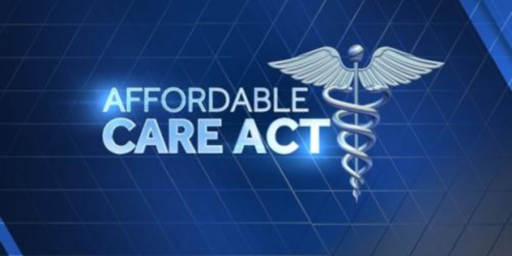Health Care Costs
Kieran Healy has compiled a chart comparing US health care spending with that of other advanced countries. and Kevin Drum vastly improves it by adding a big red arrow.
Kieran explains,
Here’s a figure showing the relationship between the “Publicness†of the health system and the amount spent on health care per person per year. Data points are each country’s mean score on these measures for the years 1990 to 2001. You can also get a nicer PDF version of this figure. As you can see, health care in other advanced capitalist democracies is typically twice as public and half as expensive as the United States.
Now, this picture doesn’t resolve a whole bunch of arguments about the relative efficiency of public vs private care or the right kind of health system to have. (Brian [Weatherson] discussed some of these issues last year. There’s not much evidence that the quality of care in the U.S. is twice as good as everywhere else.) Things are also complicated — or made worse — by the fact that, despite not having a national health system, U.S. public expenditure on health in the 1990s was higher in GDP terms than in Ireland, Switzerland, Spain, Austria, Japan, Australia and Britain. But a picture like this makes it easy to see that mainstream debate about health care in the U.S. happens inside a self-contained bubble, and that one of its main conservative tropes — the inevitable expense of some kind of universal health care system — is wholly divorced from the data.
Most of the conservative arguments against socialized medicine are about quality, choice, and convenience rather than cost. Indeed, one of the fears is that, by giving government responsibility for the program, it will naturally follow that Big Brother rations care and regulates social conduct. You’ve eaten too many cheeseburgers; no bypass for you. Smoker? You’re not getting that expensive operation. You’re 75. Sorry–no hip replacement for you; it’s just not a good investment.
Kevin observes that
Note that the chart doesn’t really demonstrate any special trend, but it does show that conservatives who insist that national healthcare systems are nothing more than vast boondoggles that inevitably produce huge amounts of waste and higher costs just isn’t looking at the evidence. As near as I can tell, France has a better healthcare system than the United States on practically every measure, and does it at half the cost.
If the Economist magazine description of the French system is accurate–and I have no reason to believe otherwise–it does sound preferable. Of course, the countries aren’t exactly comparable. France is roughly the size of Texas but vastly more populated. That should translate into the need for far less redundancy than our geographical spread requires. Furthermore, other issues impact health care costs as well. Presumably, we require more expensive trauma centers given our dependence on the automobile and greater propensity to shoot one another. We’re more prone to obesity owing to lifestyle differences. I’m guessing France also has far fewer medical lawsuits and less need for expensive medical malpractice insurance.
A major problem with our system is that it’s neither fish nor fowl. We’ve already adopted socialized medicine in pockets, which is probably the worst of all worlds. The poor, the old, the military, the disabled veterans, and others get publically financed health care. Most of those who pay for health care themselves really don’t–they rely on insurance. Either way, hardly anyone pays for health care out of pocket, which means no one has any incentive to minimize costs.
The discussions in the comments section of both Political Animal and, especially, Crooker Timber also explore other possible reasons. Indeed, as Kieran readily concedes, the correlations are all over the place–the US is a giant anomaly.





This is perhaps the saddest thing in our politics. Through a simple matter of intellectual confusion, the possibility of a bipartisan consensus which would serve the public interest is impossible.
Our major problem is not a matter of health care, nor even a matter of health care costs, it is a matter of health care insurance.
The point of insurance is that health care, for the gravely ill, is an inelastic demand which will drive all but the richest of us to penury in the end. By pooling large numbers of people, both healthy and sick, to pay for the health care of the entire pool, the extraordinary costs of being gravely ill can be accomodated without reducing someone to begging on the street.
There is absolutely no reason why this pool could not be the entire population of the United States with virtually no change in the current relations of patient to caregiver. Nobody’s “freedom” would need to be abridged in any way.
It could even be managed, through a system of government “primary” coverage and private “secondary” coverage, so that insurance company profits would actually increase while insurance costs for businesses and individuals would decrease.
Now this doesn’t mean there aren’t reasons for a more intrusive public regulation of health caregiving. There are. Much of the spiralling costs of health care here stems from the fact that a health care “free market” is NOT inherently self-regulating. The price of hospitalization, pharmaceuticals, and health care labor cannot be driven down in three weeks like the price of milk in the grocery store.
Health care for the gravely ill is an inelastic demand, period. Health care for the rest of us is moderately elastic, but the surest way to become gravely ill is to abstain from consuming diagnostic and preventative health care– neglecting, say, your colon screenings until the polyps turn cancerous. And being gravely ill costs a whole lot more in the end.
Because of this the sheer amount of waste throughout the system is staggering.
More often than not, every hospital in a large community duplicates ALL the services of every other hospital, whether the community as a whole actually needs this much care capacity or not.
Pharmaceutical companies spend unholy amounts of money on prime time television ads for the “next purple pill” even when their own research shows that the “next” one is no more effective than the last one, but merely the one they still have on patent.
Not to mention the baskets full of “free” pens, “free” post-it notes, “free” clocks, “free” hat racks, “free” prescription pads, “free” rubber toys, and “free” samples–with which the pharmaceutical reps innundate the doctor’s offices.
The nurses and clerical staff at my multiple doctors beg patients all the time to cart away the excess. And every “free” pen adds it’s widow’s mite to the health care cost mountain.
But we could even keep all this, if the industry lobbyists and the libertarians insist on it, and still insure everybody. Really. Though why any sensible person would want to keep it is beyond me.